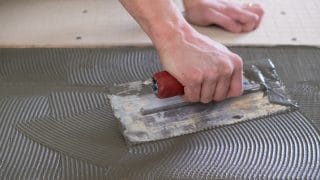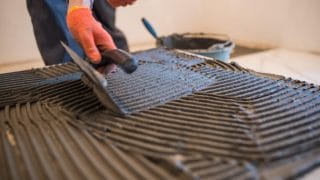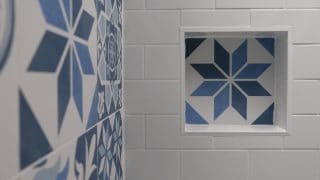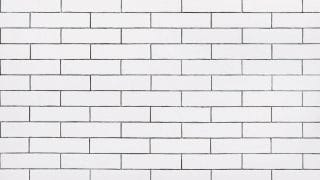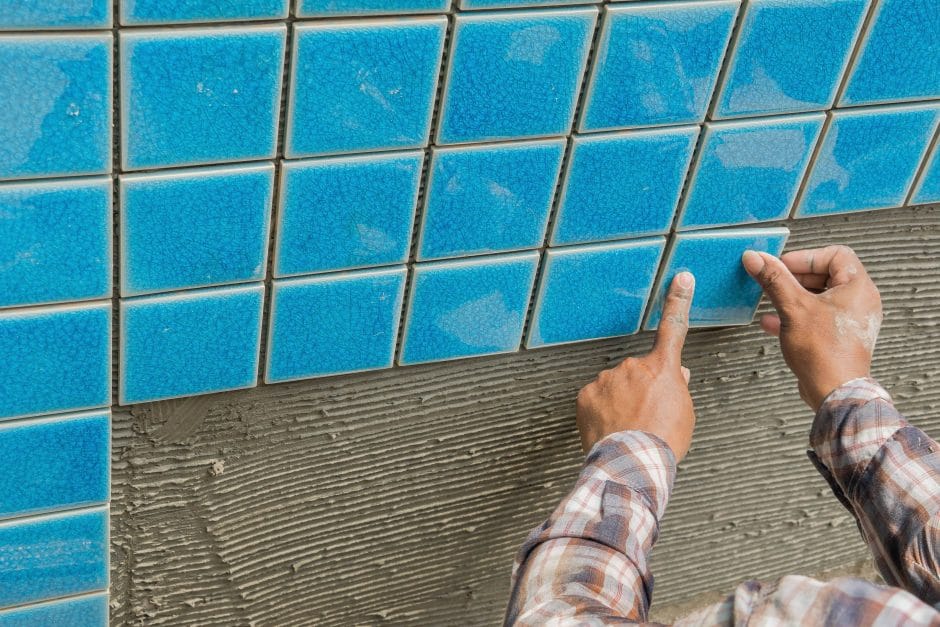
Porcelain and ceramic tiles are two clay-based types of tiles, but they have several differences. Whether you’re helping a client select tiles for a new project or need ideas for installation, it’s helpful to use the properties of both so you can make the right tiling decisions.
What is porcelain tile?

Porcelain tile is made with fine kaolin clay. Porcelain has a smooth finish and is extremely water-resistant, with a water absorption rate of 0.5 or less. It’s fired in the kiln at a higher temperature, which makes it heavier and harder than ceramic. In fact, porcelain can be fired at as much as 2,500 degrees Fahrenheit.
Because of its durability, porcelain is a good commercial floor tile. Additionally, porcelain tile is always glazed, so it’s difficult to chip. You can use it for outdoor projects as well as indoor flooring and walls.
Porcelain is generally more expensive than ceramic, but it could be a wise investment for a client’s project involving water-prone areas, such as a bathroom or outdoor patio. They’ll get maximum protection with porcelain, thanks to its water-resistant qualities.
What is ceramic tile?
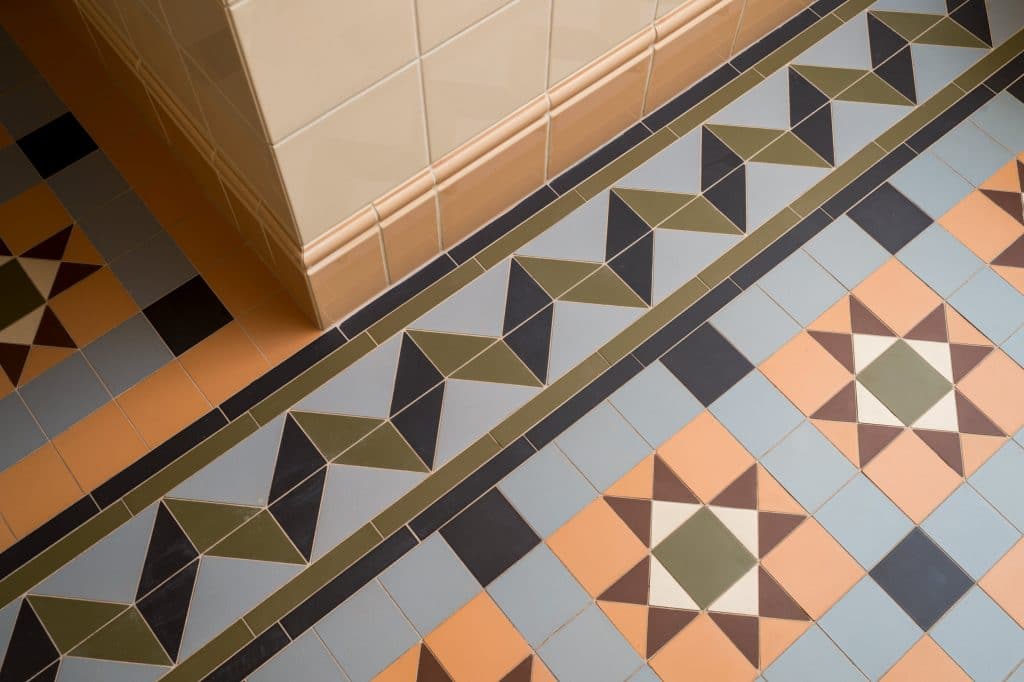
Ceramic tile is made with a coarser clay and less of the fine kaolin clay used in porcelain. Ceramic tiles are fired at a lower temperature, which makes them less durable. You can opt for glazed or unglazed tiles, depending on the style. While ceramic tile typically has less water resistance compared to porcelain, the difference is minimal when glazed.
Ceramic tiles are ideal for indoor use, including walls and floors. Outdoor use is possible for patios and walkways but should be limited to high-quality, water-resistant tiles.
Ceramic has a more textured surface since it’s not as smooth and polished as porcelain. This can be a benefit or a drawback, depending on the client’s preference.
Key differences between ceramic and porcelain tile
There are some notable differences between ceramic and porcelain tile:
Porcelain and ceramic tiles are two clay-based types of tiles, but they have several differences. Whether you’re helping a client select tiles for a new project or need ideas for installation, it’s helpful to use the properties of both so you can make the right tiling decisions.
What is porcelain tile?

Porcelain tile is made with fine kaolin clay. Porcelain has a smooth finish and is extremely water-resistant, with a water absorption rate of 0.5 or less. It’s fired in the kiln at a higher temperature, which makes it heavier and harder than ceramic. In fact, porcelain can be fired at as much as 2,500 degrees Fahrenheit.
Because of its durability, porcelain is a good commercial floor tile. Additionally, porcelain tile is always glazed, so it’s difficult to chip. You can use it for outdoor projects as well as indoor flooring and walls.
Porcelain is generally more expensive than ceramic, but it could be a wise investment for a client’s project involving water-prone areas, such as a bathroom or outdoor patio. They’ll get maximum protection with porcelain, thanks to its water-resistant qualities.
What is ceramic tile?

Ceramic tile is made with a coarser clay and less of the fine kaolin clay used in porcelain. Ceramic tiles are fired at a lower temperature, which makes them less durable. You can opt for glazed or unglazed tiles, depending on the style. While ceramic tile typically has less water resistance compared to porcelain, the difference is minimal when glazed.
Ceramic tiles are ideal for indoor use, including walls and floors. Outdoor use is possible for patios and walkways but should be limited to high-quality, water-resistant tiles.
Ceramic has a more textured surface since it’s not as smooth and polished as porcelain. This can be a benefit or a drawback, depending on the client’s preference.
Key differences between ceramic and porcelain tile
There are some notable differences between ceramic and porcelain tile:
- Durability. Porcelain is more durable, thanks to the high temperature at which it is fired. Glazed ceramic tiles can also be durable, but porcelain is typically longer-lasting, particularly in areas that get a lot of foot traffic.
- Water-resistance. Porcelain is harder and therefore less porous than ceramic, which makes it impervious to water. Porcelain also does a better job of preserving wet areas like showers and sink backsplashes.
- Installation. Ceramic is easier to install, making it ideal for DIYers. Professionals typically have the tools and experience to make clean cuts on porcelain.
- Maintenance. Both porcelain and ceramic tiles require periodic grout resealing due to water damage. That said, homeowners may need to reseal the entire ceramic tile to prevent water damage over time.
- Cost. Ceramic can be a lot cheaper than porcelain. However, a high-quality ceramic tile can be on par with the price of porcelain. It all depends on the budget, desired look, and preference for durability.
Advantages & disadvantages of porcelain tile
Porcelain tiles are typically better quality than ceramic, but there are some drawbacks to keep in mind.
Advantages of porcelain tile
- Easy to clean. Porcelain is not very porous, so it’s easy to clean. Deep cleans aren’t required on a regular basis, and you can use a wide range of cleaning materials on porcelain.
- Low absorption rate. Water won’t seep into porcelain tiles, which keeps them looking fresh and prevents water damage.
- Durable. Porcelain’s hard finish makes it less likely to chip.
Disadvantages of porcelain tile
- Hard to install. Porcelain tile is durable, but harder to cut. Builders and DIY-minded homeowners may want to call a specialist for installation.
- More expensive. Porcelain tiles are more expensive than ceramic due to their higher quality.
Advantages & disadvantages of ceramic tile
Ceramic may not be as durable as porcelain, but there are times when using the material makes sense.
Advantages of ceramic tile
- Better for beginners. It’s harder to achieve clean, polished cuts with porcelain tile. Ceramic is better for less experienced contractors or DIYers because it’s easier to cut and install.
- More affordable. Ceramic tiles cost a fraction of porcelain. There are certainly upscale options that cost more, but there are plenty of ceramic tiles for those on a budget.
Disadvantages of ceramic tile
- Chips easily. Ceramic is less durable and tends to chip more than porcelain. Plus, when it’s glazed, it’s easier to notice the chips because the color beneath the glaze is different.
- Less water-resistant. Most ceramic tiles shouldn’t be used in areas with lots of moisture or humidity, especially bathrooms and outdoor spaces. Some are glazed to increase their water resistance, but in general, porcelain is best for repelling water.
Final thoughts
Choosing between ceramic and porcelain tile can be an important decision when it comes to building new homes or home improvement projects. The type of tile impacts everything from budget to installation and even ongoing maintenance. A solid understanding of how each tile is made will go a long way to determining the best option for your client.
MT Copeland offers video-based online classes that give you a foundation in construction fundamentals with real-world applications, like drywall finishing. Classes include professionally produced videos taught by practicing craftspeople, and supplementary downloads like quizzes, blueprints, and other materials to help you master the skills.

